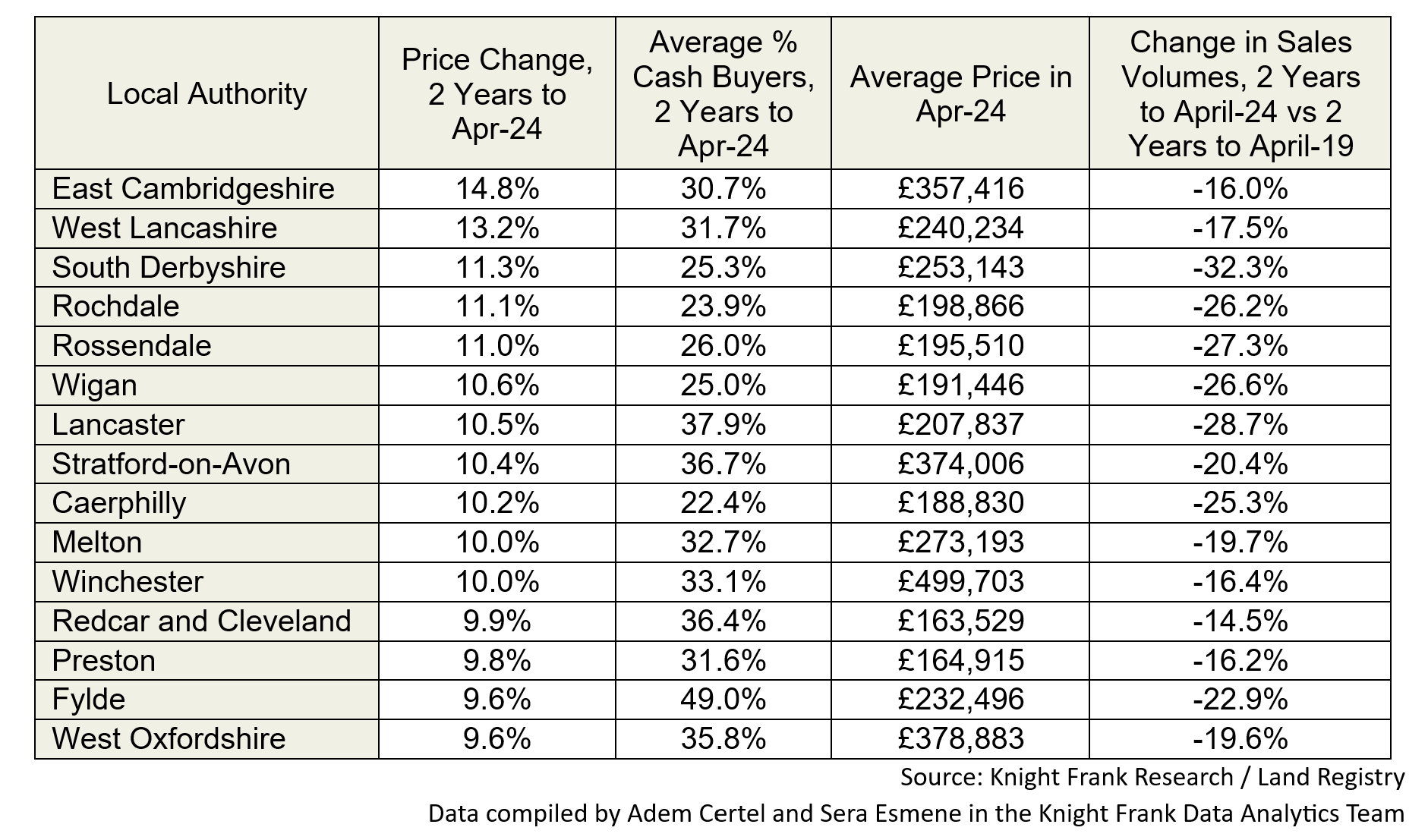How Did Different Parts of the UK Property Market Perform as Rates Surged?
New analysis shows the limited role of cash buyers as rates increased 14 times between November 2021 and August 2023
3 minutes to read
The sky darkened over the UK property market in Spring 2022.
Bank of England Governor Andrew Bailey described the impact of high inflation on the economy as potentially “apocalyptic”.
It followed Russia’s invasion of Ukraine in February of that year and criticism the Bank had been too slow to raise rates as cost-of-living pressures mounted.
After a series of 14 hikes that began in November 2021, rates were cut this month to 5% from 5.25%. In a further boost, last week’s inflation figures were lower than expected, which meant financial markets moved closer to fully pricing in two further cuts of 0.25% this year.
Is this the month the clouds started to clear?
It has certainly been a painful process as interest rates have returned to their long-term norm for the first time since 2008, as we explored here.
The average 5-year fix increased to 4.51% in July (75% loan-to-value) from 1.63% in January 2022, according to the Bank of England.
To discover how different parts of the UK housing market performed during this transition, we analysed prices and transaction volumes across all local authorities in England and Wales.
Perhaps the most surprising conclusion is that cash buyers didn’t have a particularly obvious impact as borrowing costs spiralled.
Ranking all local authorities by their percentage of cash buyers in the two years to April 2024, there was only a small difference between the top and bottom of the list.
The 25 areas with the highest proportion of cash buyers experienced an average decline in sales volumes of 24% versus the two-year period to April 2019. In the 25 local authorities with the lowest ratio of cash buyers, the equivalent fall was 27%.
The highest percentage of cash buyers was in North Norfolk (60.3%) while the lowest was Barking and Dagenham (8.5%). The local authority where transactions held up best was Kensington & Chelsea (+11.3%), where 54.7% of buyers paid in cash.
Meanwhile, prices increased by an average of 1.4% in the two years to April 2024 in the top 25 areas for cash buyers while the equivalent rise was 0.9% in the bottom 25 locations.
Despite cash buyers having the advantage, the figures underline how the tempo in residential markets is largely set by leveraged buyers.

The second conclusion is that stress-testing rules for borrowers introduced after the global financial crisis (GFC) in 2008 have done their job.
It is underlined by the fact 77% of local authorities saw prices rise over the two-year period.
Together with strong wage growth and lender forbearance, it’s why repossessions are seven or eight times lower than the period following the GFC.
The third conclusion is that affordability is still an important consideration for UK house prices.
In the top 25 local authorities by house price growth, the average value in April 2024 was £271,600. In the 25 areas that saw the smallest levels of house price growth, the average figure was £448,340.
Financially-squeezed buyers have moved from more expensive urban locations like London as prices have risen in recent years, a trend accelerated by the so-called ‘race for space’ during the pandemic, as we have explored here and here.
East Cambridgeshire saw the strongest growth (14.8%) over the two-year period, no doubt helped by the fact Cambridge is one of the country’s most important life science hubs.
Kensington & Chelsea experienced the largest drop (-21.1%) but the wide spread of prices across the London borough means it has one of the country’s most volatile indices. Using a method that strips out the impact of individual sales, Knight Frank data shows prices in Kensington fell by 2% over the period.
Back in spring 2022, it would have been a fair assumption that the UK housing market would perform worse than it did as mortgage rates more than quadrupled.
Prices held up better than sales volumes but the recovery in transactions should accelerate after what could turn out to be a pivotal month.